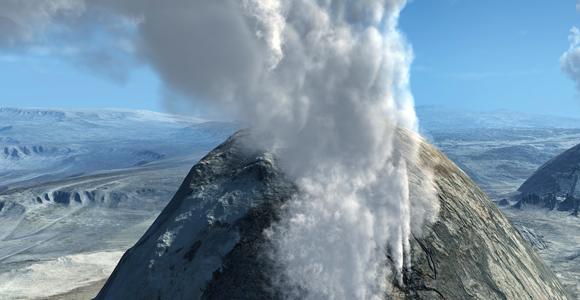Code Orange: Increased Activity at Bárðarbunga Volcano Raises Aviation Alert


The Icelandic Meteorological Office has raised the aviation alert for the Bárðarbunga volcano to orange, the second highest risk level on the alert system.
The Bárðarbunga volcano in Iceland is growing increasingly restless. The Icelandic Meteorological Office (IMO) has increased the aviation alert twice in recent days. The alert was raised to yellow on Friday and to orange early Monday. In a statement released with the latest warning, the IMO noted seismic activity that began Saturday “persists.”
A yellow threat level on the Aviation Color Code chart, which is in accordance with recommended International Civil Aviation Organization procedures, indicates a volcano is “exhibiting signs of elevated unrest above known background level.” An orange alert means a volcano shows “heightened or escalating unrest with increased potential of eruption.” A red alert, the highest on the chart, warns that eruption is “imminent” or “underway,” with “significant emission of volcanic ash into the atmosphere likely.”
The Sangeang Api volcano in Indonesia spent months at an alert level of orange before erupting in May, causing flight cancellations and airport closures as far away as Australia.
In their report, the IMO said that the Bárðarbunga volcano showed “no signs of magma moving to the surface.”
Still, the report indicates some troubling omens for aviation. “At 2:37 a.m. on the 18th a strong earthquake (M4) was located in the Kistufell swarm. This is the strongest earthquake measured in the region since 1996,” a portion of the report read. “As evidence of magma movement shallower than 10 km implies increased potential of a volcanic eruption, the Bárðarbunga aviation color code has been changed to orange.”
Ash clouds pose a unique hazard to aircraft. Even diffused ash produced by a volcanic eruption can spell trouble. Visibility can fall to zero. The airborne debris can clog turbines in jet engines and effectively sandblast flight surfaces.
Because of Iceland’s relative proximity to European airspace and transatlantic flight paths, a volcanic eruption on the tiny island could, depending on weather patterns, affect an enormous number of commercial flights.
When the Eyjafjallajökull volcano in Iceland erupted in 2010, it sent an ash cloud toward Europe and wreaked havoc on aviation. The eruption caused the largest disruption of European air traffic since the end of World War II. More than 10 million European and transatlantic travelers were stranded or prevented from boarding flights, and the entire incident cost an estimated $2 billion to $3.34 billion.
Icelandair was one of the few carriers that managed to operate daily, albeit diverted, flights between Europe and North America during the peak of volcanic activity, which gradually closed most European airspace between April 15 and April 21 that year.
In a sort of modern-day offering to the gods, Icelandair has a tradition of naming its aircraft after the country’s numerous volcanoes. Currently, there is not an aircraft in the fleet named after the Bárðarbunga volcano.
[Photo: iStock]























At least we an pronounce this one. It sounds Italian though. /me checks flights cairo to Italy, the rest of the way is easy
I still have my tshirts I bought in Iceland in 2010 that say "It's easy for you to say volcano" and "Iceland. We may not have cash, but we've got cash!" Wonder what the t-shirts will say this time if it happens.